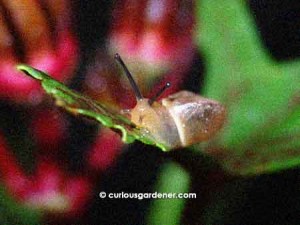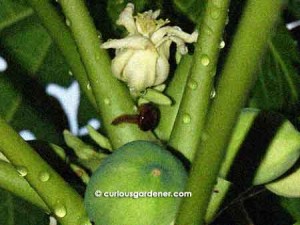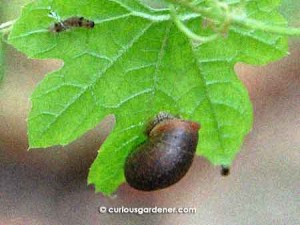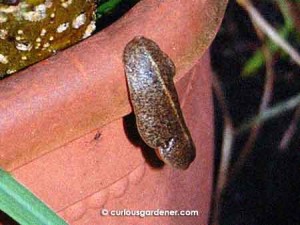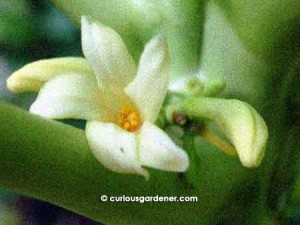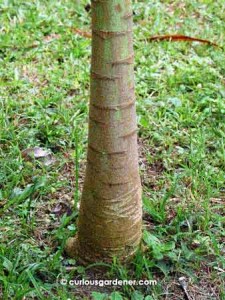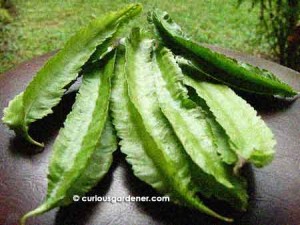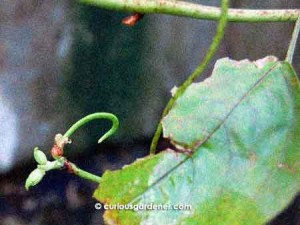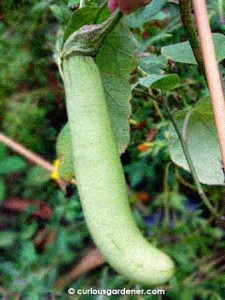After the hesitant start at the trellis, the winter melon plant decided to get the party started. It started growing bigger, healthier leaves, and as Novice Gardener predicted, had a very good growth spurt.
When it was about half a metre tall, the first flower bud appeared. Of course it was a male flower, and it eventually bloomed on an approximately 4cm stem.
Unlike other cucurbitaceae flowers – that we’ve grown, anyway – this was a rather robust looking flower. It was big and broad, and really opened up to display the strong anthers loaded with pollen within. I found the calyx to be bigger than our other cucurbitaceae plants, and actually rather pleasing to the eye with the broad, curly sepals supporting the flower petals. Everything about this flower made me think of strength.
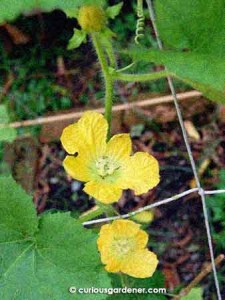
Male winter melon flowers in a row - already done blooming at the bottom, now blooming in the middle, and right at the top, gonna bloom soon.
Of course, that made me actually start to look for information on growing winter melon plants, and that’s when I realized my trellis will probably not be strong enough to support fruits, if we’re lucky to get them. The bamboo sticks and string are probably not going to be able to bear the weight of the melons that I now understand can grow to several kilograms each, so some work needs to be done if the plant thrives.
And so far, it appears to be quite happy. I’ve been anxious about this plant because of the excessive rain we’ve been having recently. After all, the other winter melon plant we had growing died, possibly because of too much rain just after they were transplanted to the trellis. However, with the growth spurt and the appearance of flowers, I think this plant is happy and I’m raising my expectations to being cautiously optimistic.
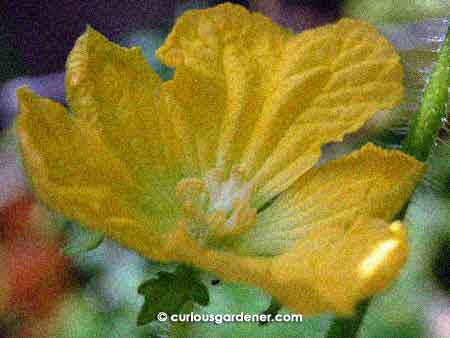
A closer look at the male flower of the winter melon plant. I find it very striking for some reason.
The plant is now nearing the top of the 1.7-metre tall trellis and has been producing male flowers at each leaf juncture. So far, I’ve counted about 11 male flowers/buds. If this plants follows the trend of cucurbitaceae (that I’ve noticed anyway), once it peaks and leans over, the female flowers should start appearing. I can’t wait!
See Phase 1 of growing winter melon plants.



